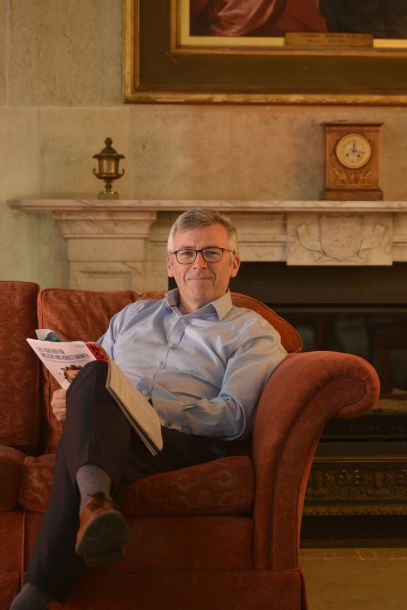
BSc (Essex), MSc (Essex), MA, PhD (Imperial)
As head of the Centre of Industrial Photonics my research interests cover a wide range of engineering science investigations that are aimed at the creation of new laser based manufacturing methods and processes. I believe that research of this kind is essential if the United Kingdom is to increase its wealth creation capabilities.
As a physicist my early research centred on the development and application of high power laser technology. I have always been interested in understanding the response of materials when subjected to intense laser irradiation levels; we can easily reach intensities of the order of 108 W/cm2, such levels can produce quite amazing results on a wide range of important engineering materials such as aerospace alloys, medical alloys, ceramics and polymers. Research outputs in this area have produced new manufacturing methods for metals and ceramics that are routinely used in all manufacturing sectors. The new field of ultra-short laser matter interactions is providing some exciting developments in laser based materials processing research. Laser pulse widths of 10-15s (femtosecond) and pulse energies of the order 10-6 J can provide high resolution machining abilities on any material, yet the substrate materials exhibit no thermal response despite having their surface atoms ionised to very high levels. This strange phenomenon has been validated for Ni and Al2O3 through the use of electron back scattered diffraction analysis (EBSD).
We continue to explore these effects whilst at the same time applying this new knowledge for the creation of advanced nanofabrication techniques for next generation micro and nano products. Imagine if your desktop printer could “print” you an i-pod, or some other complex electronic, mechanical or optical product. You would buy the design from the web and have it produced in your bedroom whilst you took yourself off for a cup of tea. This sounds quite far fetched to most people, although very attractive if it could be made to work. Global migration of factory production would be a thing of the past and new business models would be needed for this new century manufacturing technology.
My research team and I are investigating ways in which we can manipulate nanoparticles in order to “print” complex goods that are usually made in the millions by incredibly expensive production plants. It would allow for the realisation of your very own Santa Claus machine, personal factory or replicator. This challenge is indeed very grand, and one in which the UK research councils have supported with £10M of research funds until the year 2011. Watch this space; your personal factory could be just a few years away!
“New aspects of melt flow phenomena through narrow kerfs”, M S Gross., W. O’Neill, J. Phys. D: Appl. Phys, 40, 1201-1205, (2007).
“The manufacture of a very high precision x-ray collimator array for rapid tomographic energy dispersive diffraction imaging (TEDDI)”, L Tunna, P Barclay, R J Cernik, K H Khor, P Seller, and W. O’Neill Meas. Sci. Technol. 17 No 7, 1767-1775, (July 2006).
“Experimental study of titanium/aluminium deposits produced by cold gas dynamic spray”, T. Novoselovaa, P. Foxa, R. Morgan and W. O’Neill Surface and Coatings Technology , 200, Issue 8 , 2775-2783, (2006).
“Femtosecond laser micro-structuring of alumina ceramic”, Perrie. P., Rushton. A., Gill, M., Fox. P., W. O’Neill. W. Applied Surface Science, Volume 248, Issues 1-4, pp 213-217, (2005).
“Direct laser remelting of iron with addition of boron”, Chen. X.C., Xie. J.W., Fox. P., O’Neill. W., Mater. Sci. Tech., 20, issue 6, 715-719, (2004).
